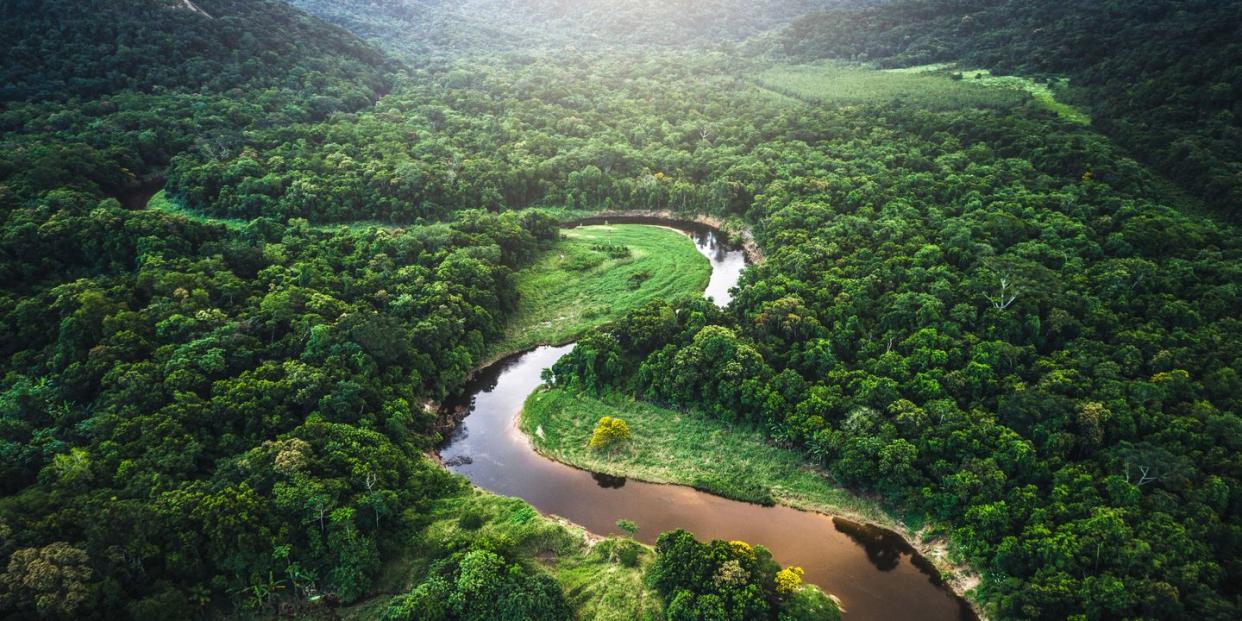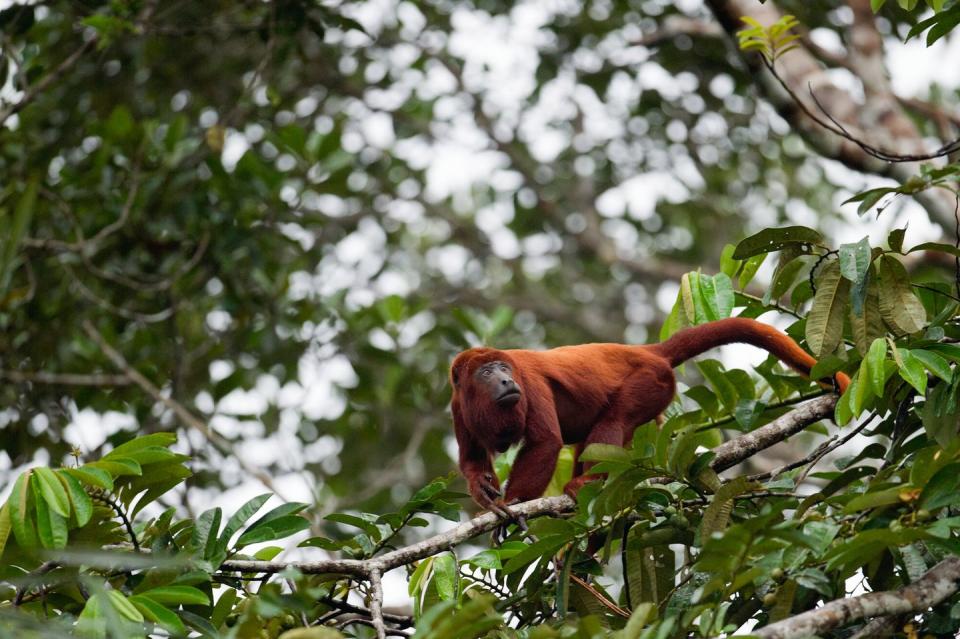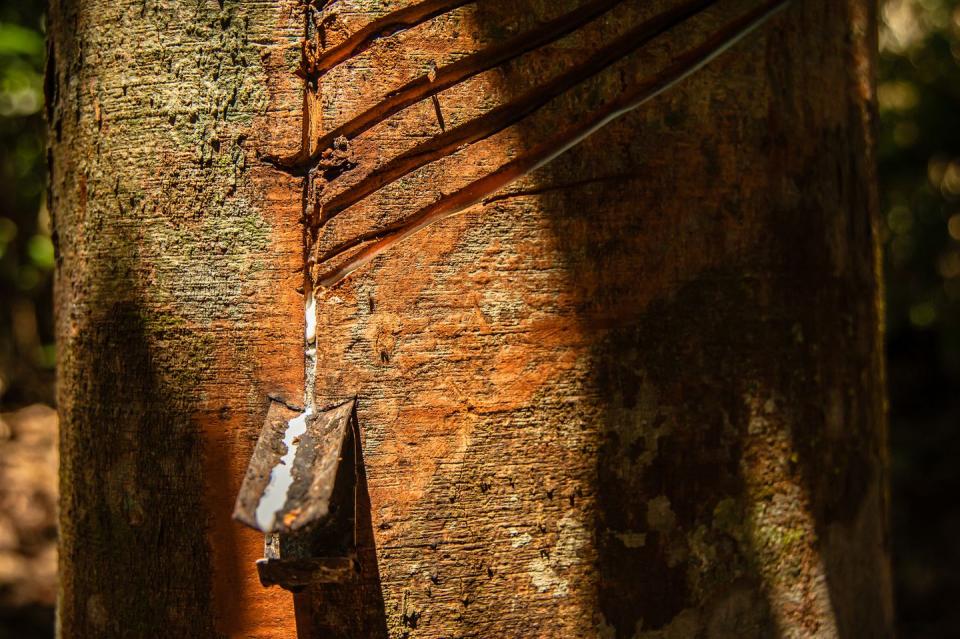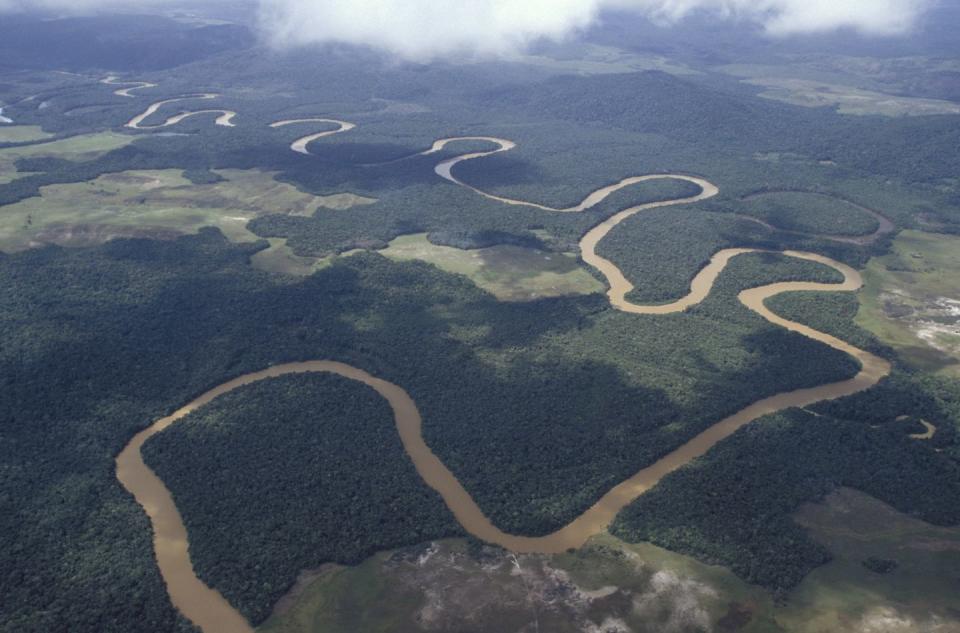4 Reasons Why We Desperately Need the Amazon Rainforest

The Amazon rainforest is the world’s largest rainforest and covers more than two million miles of land. It stretches across nine South American countries: Brazil, Columbia, Peru, Venezuela, Ecuador, Bolivia, Guyana, Suriname, and French Guiana.
The lush region provides important benefits to communities living near and far. Nearly 500 indigenous communities call the Amazon rainforest home. It’s a highly biodiverse ecosystem, home to untold species of plants and animals. The rainforest can create its own weather and influence climates around the world. Unfortunately, the fragile ecosystem faces the constant threat of deforestation and has seen devastating wildland fires this year.
Here’s more on why the region is important:
An Abundance of Animals

From pond-hopping poison frogs to spotted jaguars slinking around in the dead of night, the Amazon houses some of the world’s most charismatic plants and animals. It’s one of the most diverse ecosystems in the world, home to 10 percent of the world’s species, according to the World Wildlife Fund. There are more than 2.5 million species of insect that scuttle through the leaf litter. It contains roughly 1,300 bird species, 3,000 species of fish and approximately 430 species of mammals, according to National Geographic.
These animals play an important role in keeping the rainforest healthy. For instance, important nutrients from the carcasses, feces, and food scraps deposited by mammals leech into the forest floor. This nutrient influx helps soil microbes better store carbon instead of releasing it into the atmosphere.
A Wide Variety Of Plant Life

More than 40,000 plant species have been found in the Amazon rainforest. Many of them have important medicinal uses or are found in the foods we eat. Chocolate, vanilla, cinnamon, pepper, and coffee are grown in the rainforest. Rubber trees produce a sticky, white latex sap that holds our planet together and provides a source of income for indigenous communities living in the rainforest.
The Amazon’s plants play an active role in regulating the ecosystem. As plants in the Amazon photosynthesize, they create their own weather. Through a process called transpiration, plants release water vapor from pores along the underside of their leaves. This moisture influx sustains life by seeding thick bands of clouds that keep water locked in the lush forest and flowing into river that supply communities downstream.
This phenomenon doesn't just impact weather in the Amazon. As the rain falls over the forest, warm air rises high into the atmosphere, pulling even more moisture in from the ocean thousands of miles away.
The Amazon River's Riches

The Amazon River is the second longest river in the world, next to the Nile. Its winding waterways cover roughly nearly 4,000 miles, according to the U.S. Geological Survey. The Amazon has the highest rate of rainfall in the world, according to National Geographic. More than 3,700 cubic miles of rainwater fall from the sky each year.
Biodiversity along the Amazon River and its surrounding wetlands is incredibly rich. The winding river is home to numerous species including red bellied piranha, pancake stingrays, bull sharks, black caiman crocodiles, and the endangered pink river dolphin. A recent study suggested that wetlands in the Amazon hold over 53 percent of the more than 6,727 tree species counted in the Amazon.
The Carbon and Oxygen Cycle
The Amazon rainforest plays an important part in regulating the world’s oxygen and carbon cycles. It produces roughly six percent of the world’s oxygen and has long been thought to act as a carbon sink, meaning it readily absorbs large amounts of carbon dioxide from the atmosphere.
But when trees are logged and the forest is burned, that carbon is released into the atmosphere at alarming rates. Recent research has suggested that these forests might actually be emitting more carbon dioxide than they’re absorbing. Luckily, if we’re able to conserve large parts of the fragile ecosystem, scientists believe we may be able to restore its status as a carbon sink.
You Might Also Like

